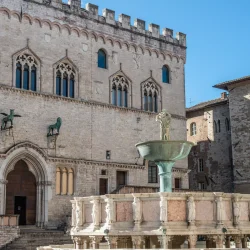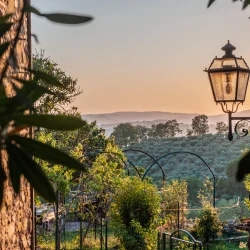
St. Francis 2026: Extraordinary Public Display of the Saint’s Remains
Historic exhibition of the remains of Saint Francis in 2026 in Assisi.
Assisi is preparing for a historic moment: for the first time ever, the mortal remains of Saint Francis will be displayed to the public on the 800th anniversary of his death.
Assisi — For the first time in history, visitors from around the world will be able to contemplate the mortal remains of Saint Francis of Assisi up close. This unprecedented event, organized to mark the 800th anniversary of the Saint’s death (1226–2026), is already being described as one of the most significant spiritual and cultural occasions of the coming decade. From February 22 to March 22, 2026, the Basilica of Saint Francis will open a specially designated area in the Lower Church to welcome pilgrims for a unique experience of veneration and reflection.
Promoted by the “San Francesco Vive” initiative and the Sacred Convent, the exhibition is more than a commemorative celebration; it is an invitation to rediscover the message of the Poor Man of Assisi in an age marked by global upheaval, social transformation, and renewed spiritual inquiry.
An Event Eight Centuries in the Making
From the moment of Francis’s death on the night of October 3, 1226, in Santa Maria degli Angeli, his body was guarded with extraordinary care. It was buried deep beneath the Basilica to prevent theft, unauthorized relocations, or acts of profanation. Unlike many other medieval saints, Francis’s remains were almost never publicly displayed. The few official examinations—such as those conducted between 1818 and 1819, or the scientific studies completed in 2015—were always carried out in strict confidentiality.
The 2026 ostension will therefore be the first continuous and public display of his remains in history. Organizers have called it an “exceptional” gesture, conceived not as a ritual celebration but as “a gift to the People of God,” in the words of Fra Giulio Cesareo, head of communications for the Sacred Convent.
Dates, Location, and Reservations
The exposition will be open for exactly thirty days, from February 22 to March 22, 2026.
The chosen location is highly symbolic: the Lower Church of the Basilica of Saint Francis, adjacent to the papal altar, in a space specially prepared to ensure an orderly flow of pilgrims, the protection of the relics, and an atmosphere conducive to prayer.
Admission will be free, but visitors must book a time slot through the official website SanFrancescoVive.org. Reservations, available for several months already, have surpassed 150,000 requests—clear evidence of the international anticipation surrounding the event.
A Path of Veneration: Silence, Reflection, and Inclusion
The project offers two different modes of participation:
- Guided pathway, led by a friar, with brief meditations available in several languages.
- Self-guided pathway, for those who wish to experience the visit in personal silence.
Special care has been taken to ensure accessibility: the entire setup will be fully accessible to visitors with disabilities, with dedicated routes and trained staff.
At the end of the visit, pilgrims will receive a small token of gratitude as a sign of the moment they have just experienced.
Daily liturgies will also be enriched by two international Masses held in the Upper Basilica at 11:00 and 17:00, designed to welcome groups from different countries.
The Spiritual Message: “The Seed That Dies Bears Fruit”
Beyond the external event, the exhibition carries a profound theological and cultural message. Its guiding theme is the biblical image of the seed that must die in order to bear fruit—a metaphor that evokes Francis’s total gift of self.
Rather than dwelling on death, the initiative emphasizes life: the transformative power of the Gospel embodied by the Saint—peace as daily commitment, universal fraternity, closeness to the marginalized, love for creation, and joy as a way of living.
“To meet Francis,” the organizers explain, “is to encounter a man whose voice remains astonishingly relevant to our times.”
Historical Roots: From Examinations to Scientific Confirmation
Despite centuries of devotion, the story of Francis’s remains includes periods of silence and rediscovery:
- 1818–1819: During restoration works, the Saint’s body was rediscovered and examined in the first official recognition.
- 1926: On the seventh centenary of his death, new examinations confirmed the authenticity of the relics.
- 2015: Anthropological and medical analyses revealed full compatibility with medieval descriptions: signs of his final illness, bone characteristics consistent with his lifestyle, and evidence linked to the stigmata.
These studies have allowed the Franciscan Order to approach the 2026 exhibition with historical confidence and scientific clarity.
The Anniversary’s Visual Identity
The “San Francesco Vive” project has adopted a stylized Tau as its symbol, the biblical letter to which Francis was deeply attached and that he often traced on documents and on the homes he visited. In Christian tradition, the Tau represents salvation and the passage from death to life—perfectly aligned with the deeper meaning of the event.
An Anniversary That Speaks to the Contemporary World
Expectations surrounding the ostension are immense, extending well beyond the religious sphere. The event touches on several themes central to the modern world:
- Peace, in a time marked by international conflict.
- Care for creation, amid the climate crisis.
- Social fraternity, in an era of division and polarization.
- The search for meaning, in a society that often appears disoriented.
For many scholars, the 800th anniversary offers a rare opportunity to bring back into public conversation a model of humanity that is simple, radical, and profoundly relevant.
A Meeting with History
The exhibition of the remains of Saint Francis is not “just” a religious event, but a cultural and human milestone of global significance. A once-in-a-lifetime moment that bridges past and present, spirituality and introspection, silence and collective participation.
Eight centuries after his death, Francis still speaks to the world with simplicity and strength. And for one month, millions of people will have the opportunity to draw near not only to his message but also to the mystery of his life offered in full.


